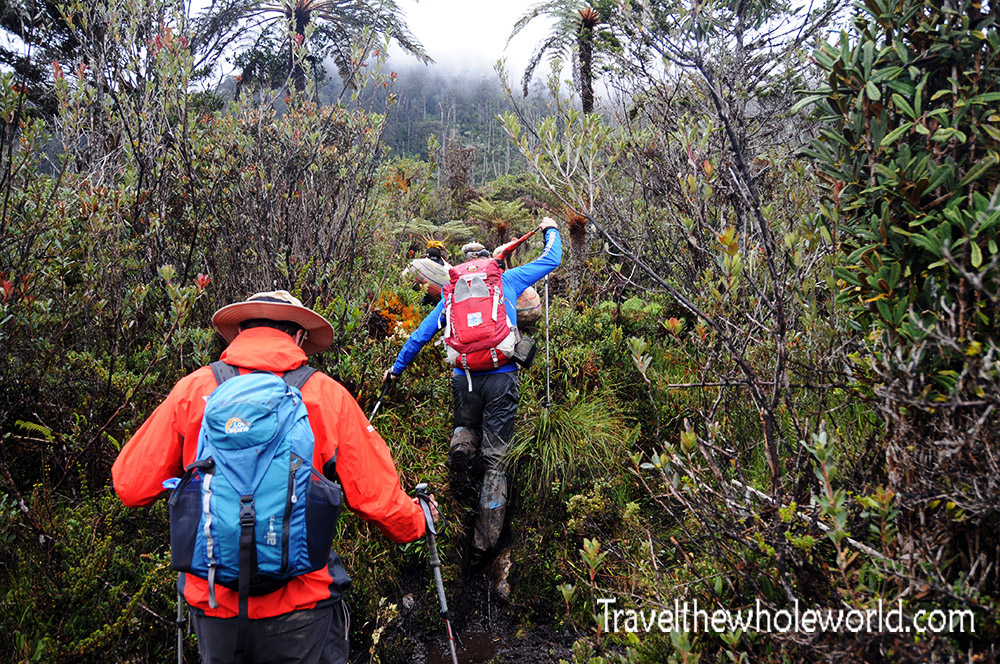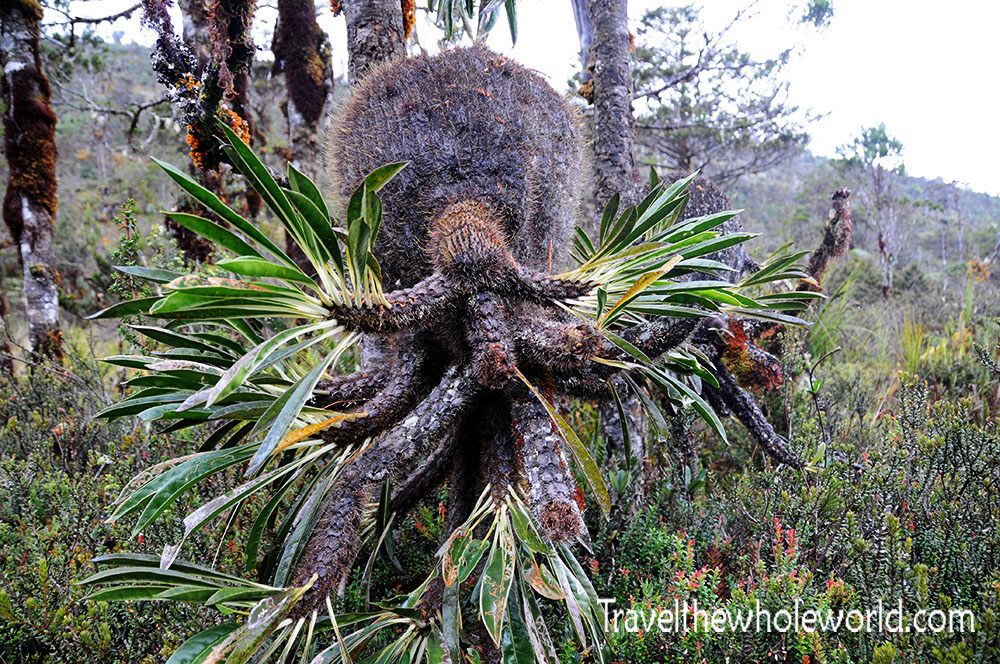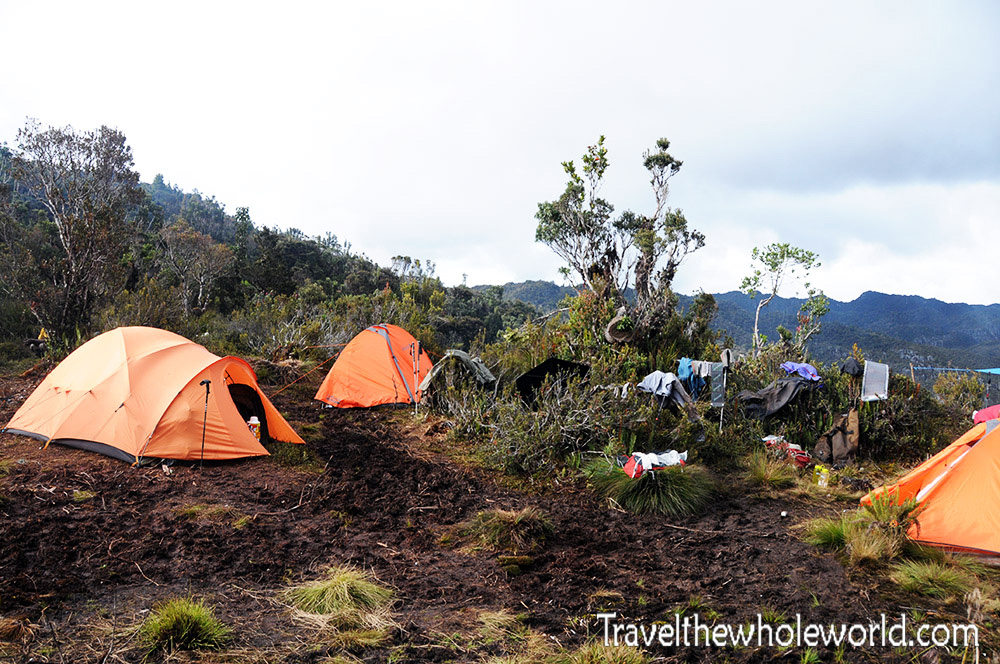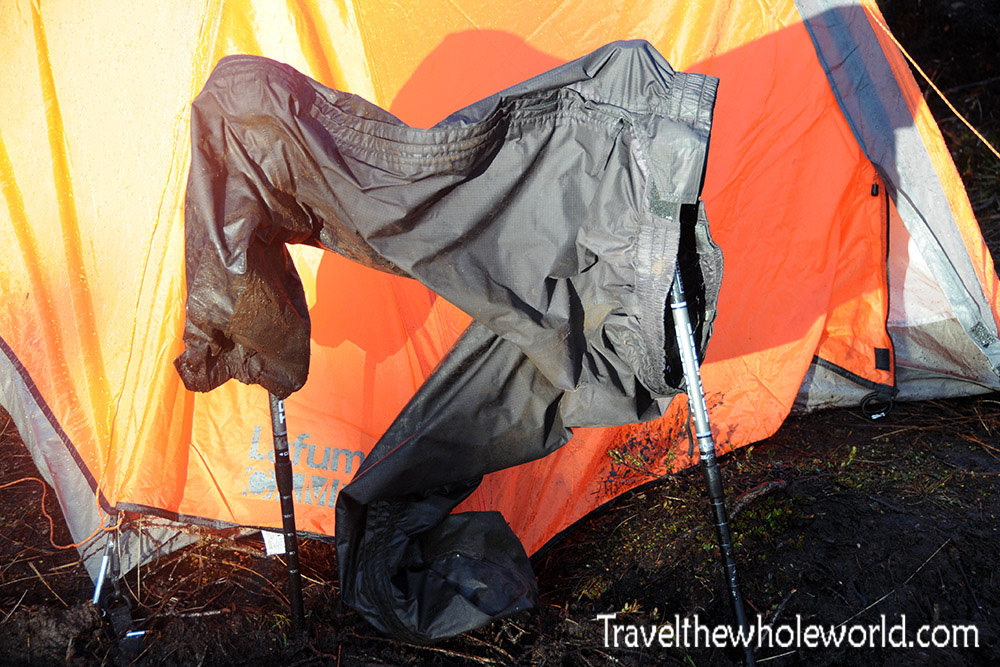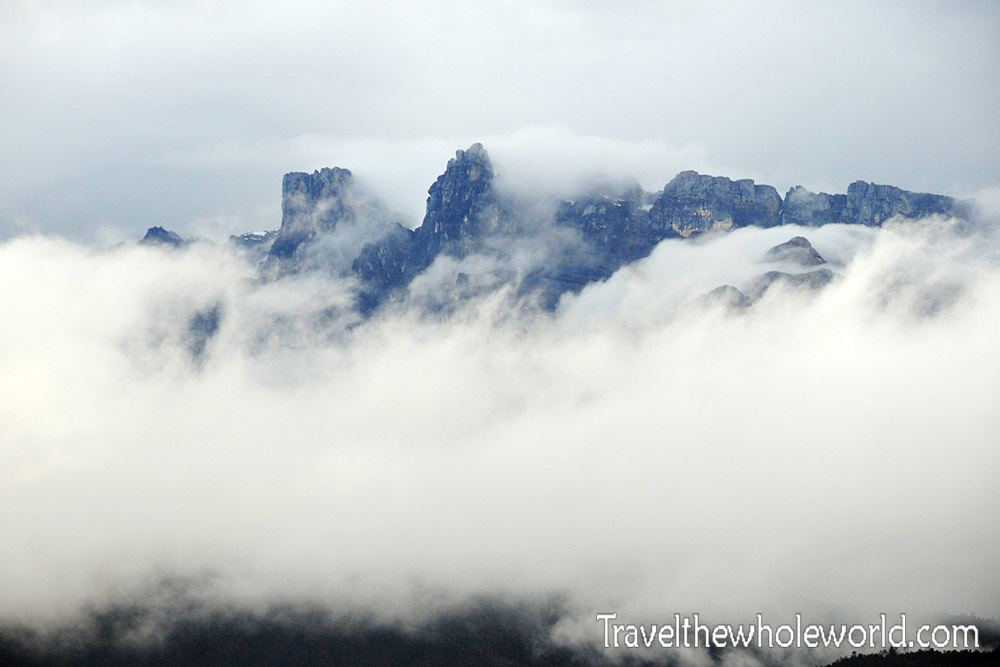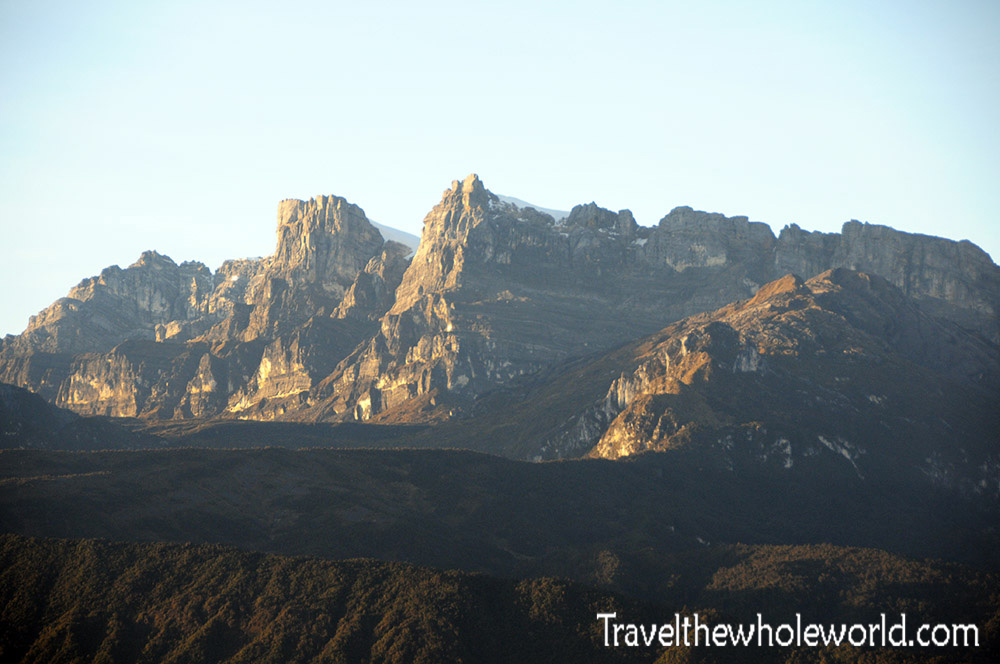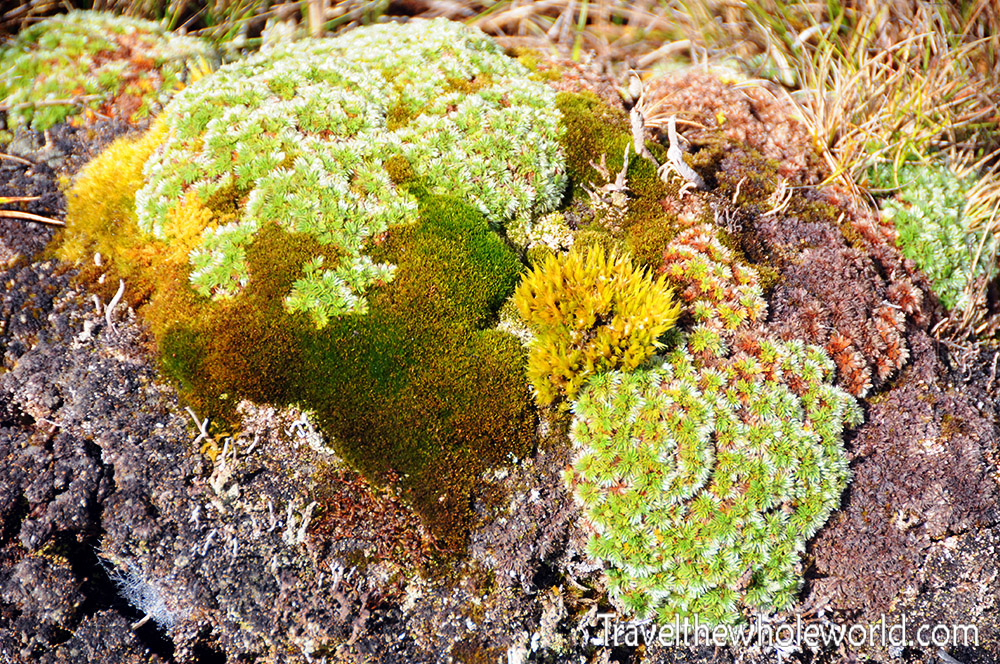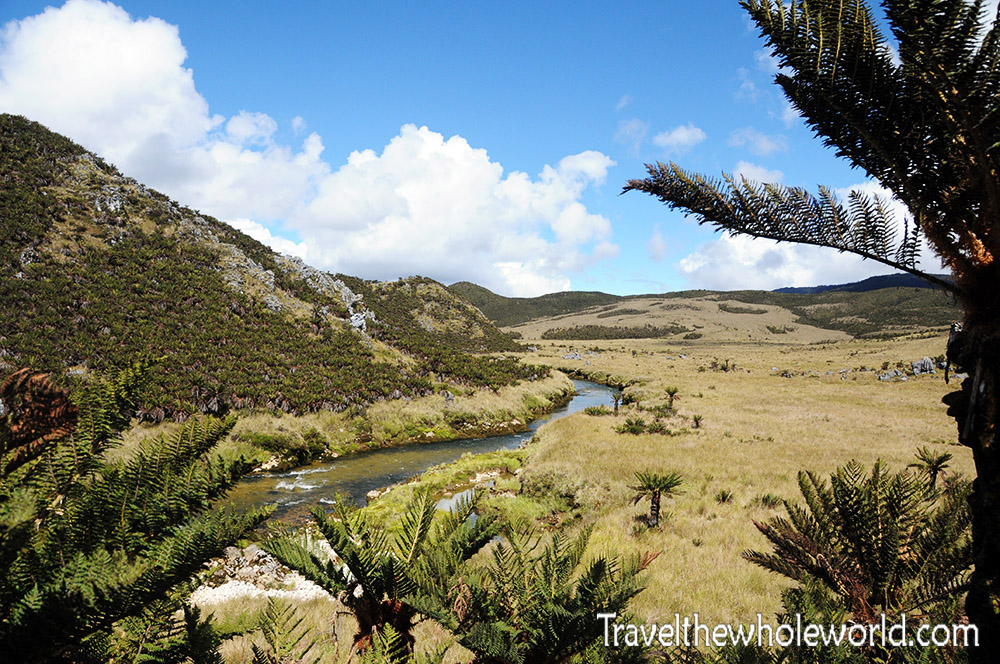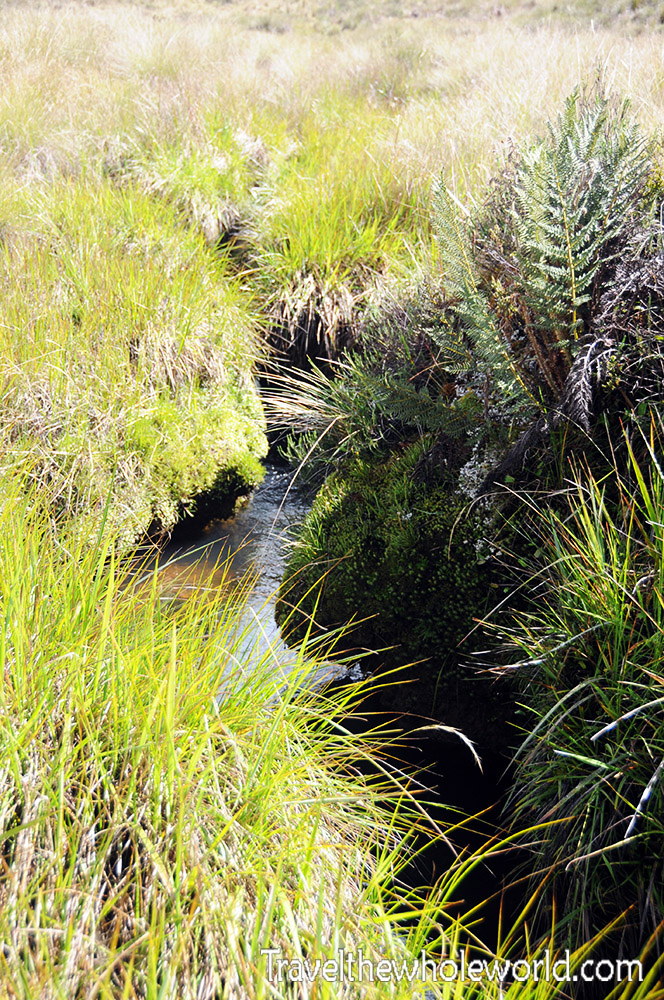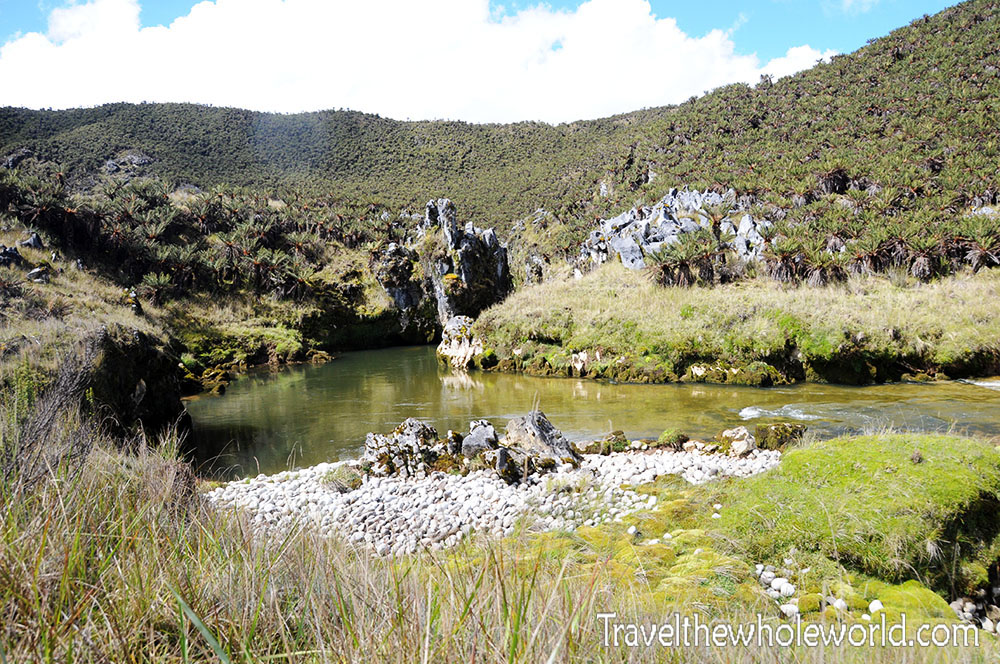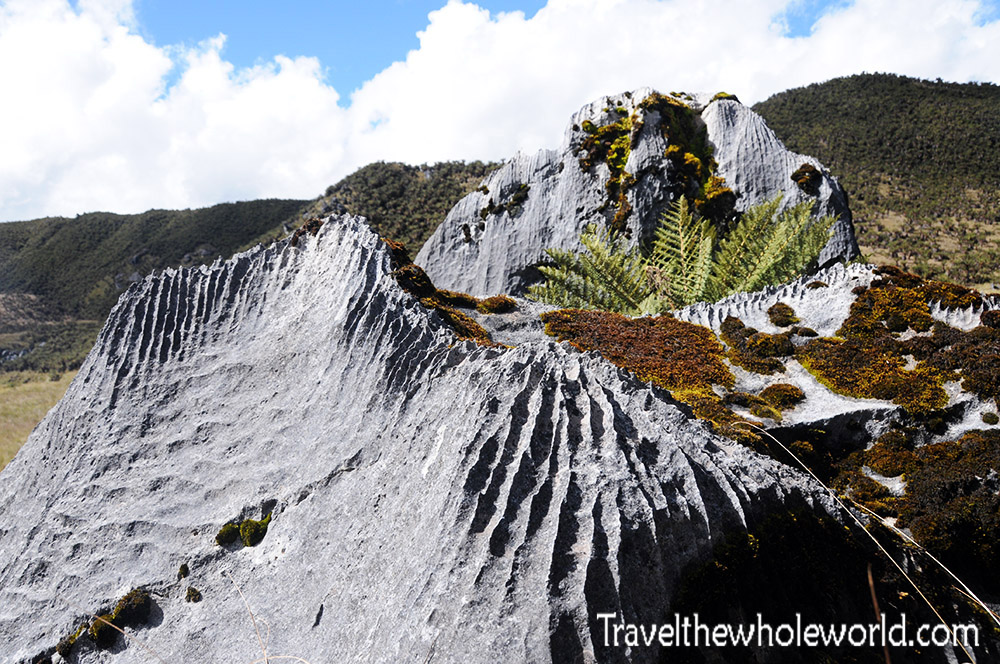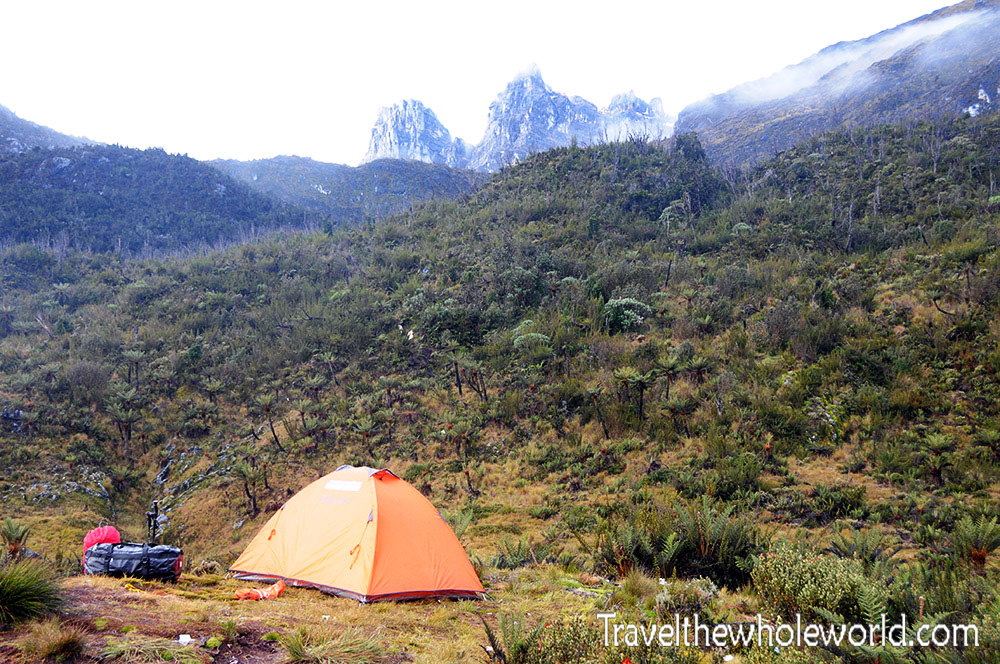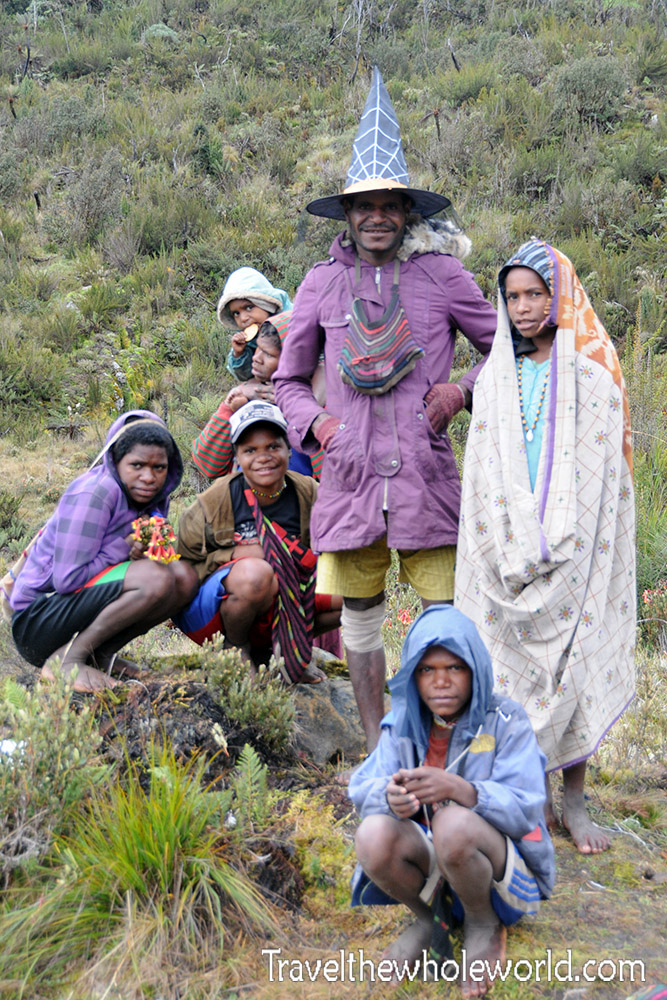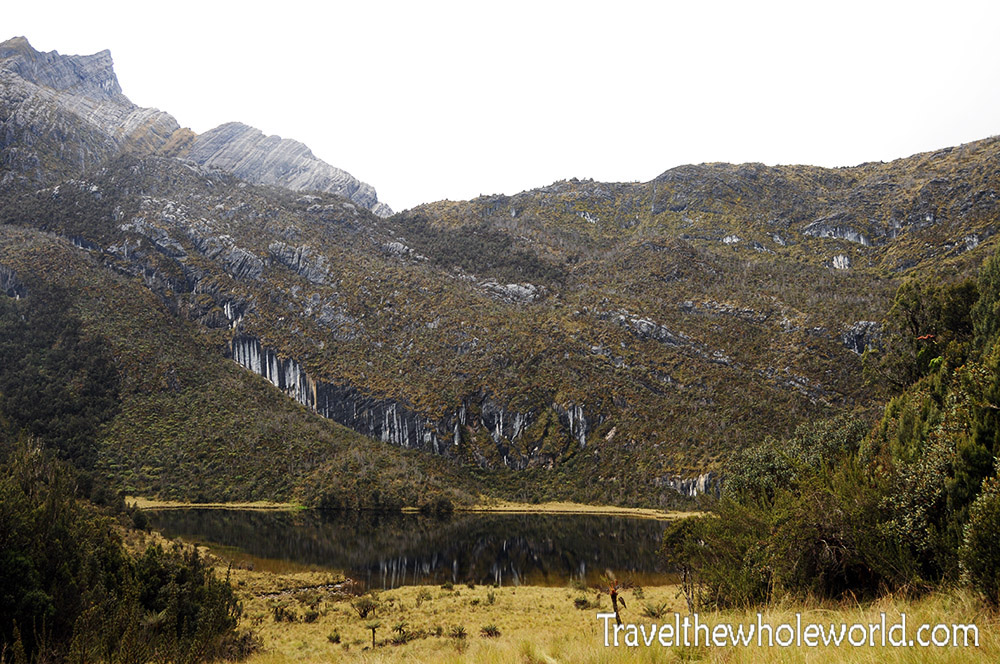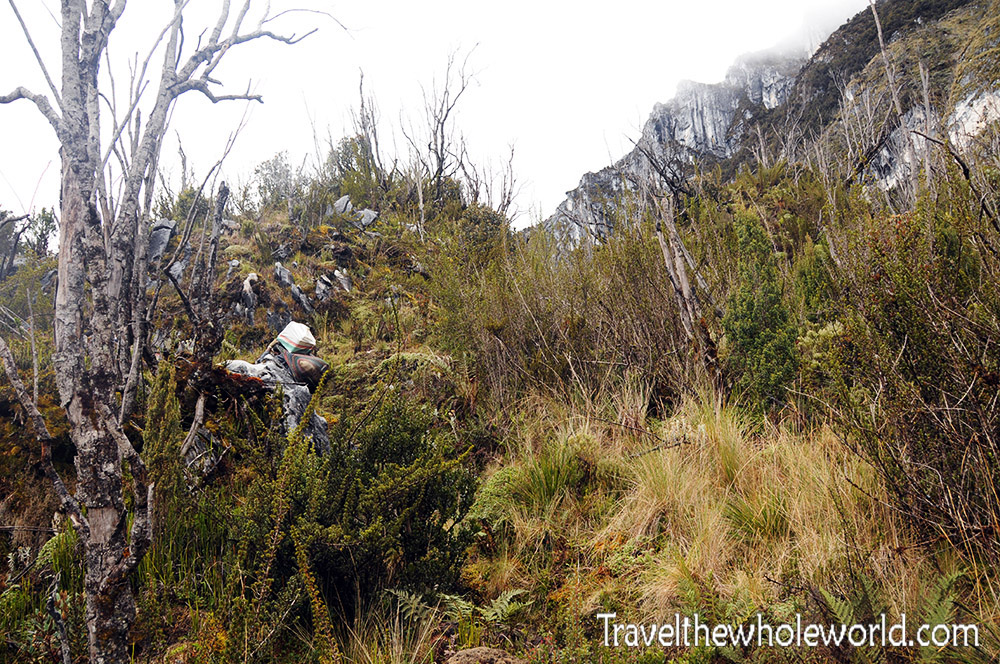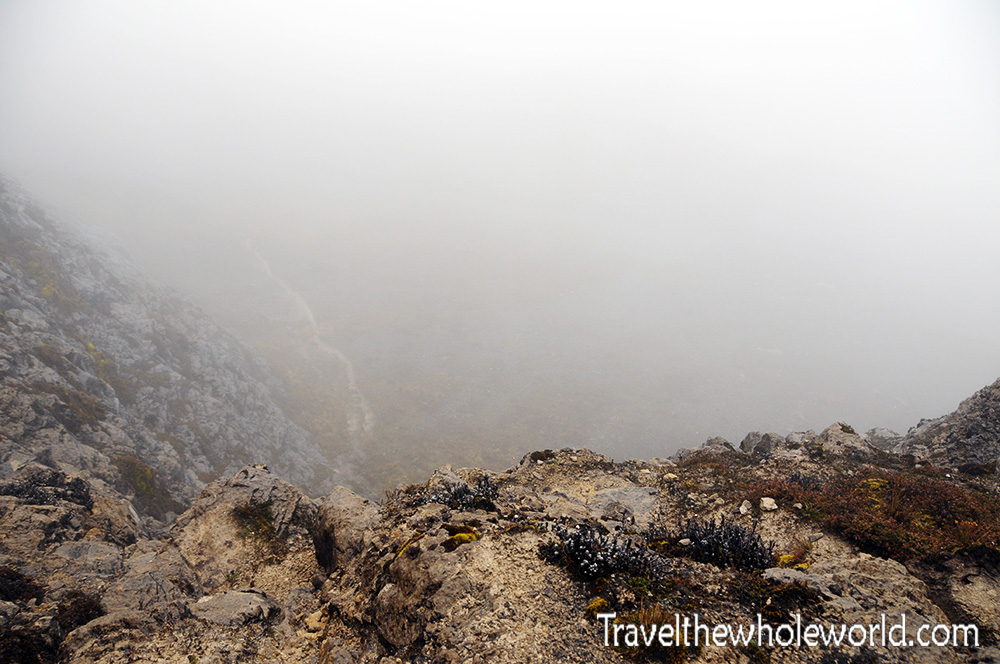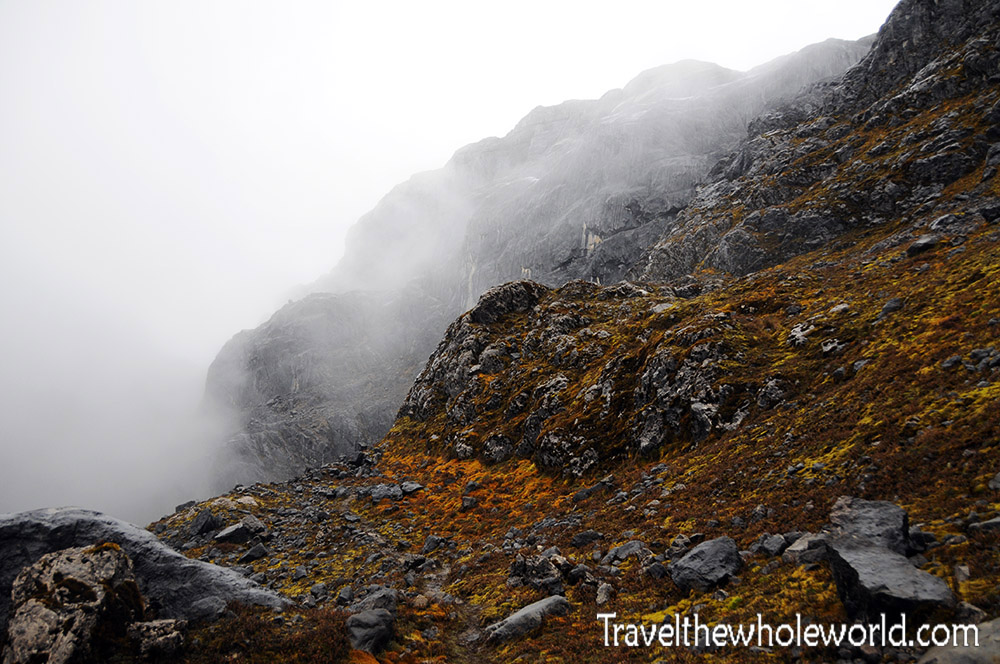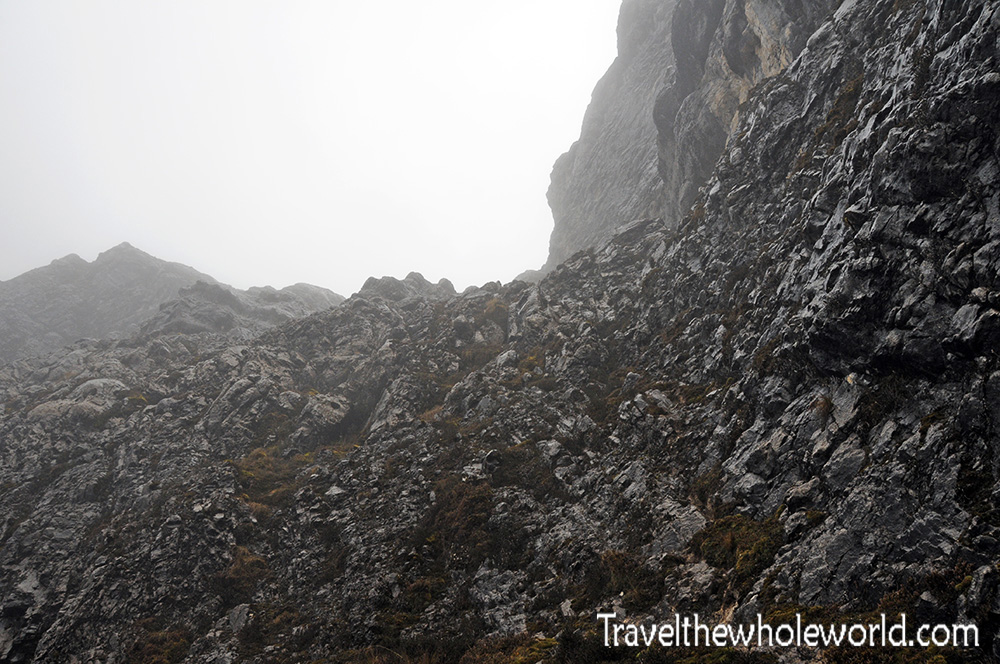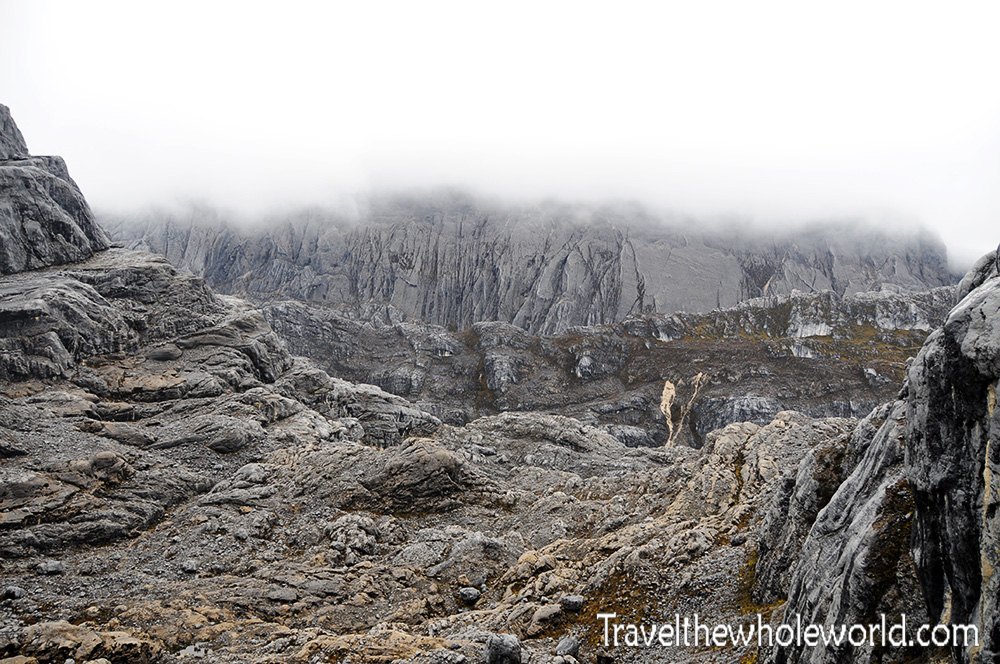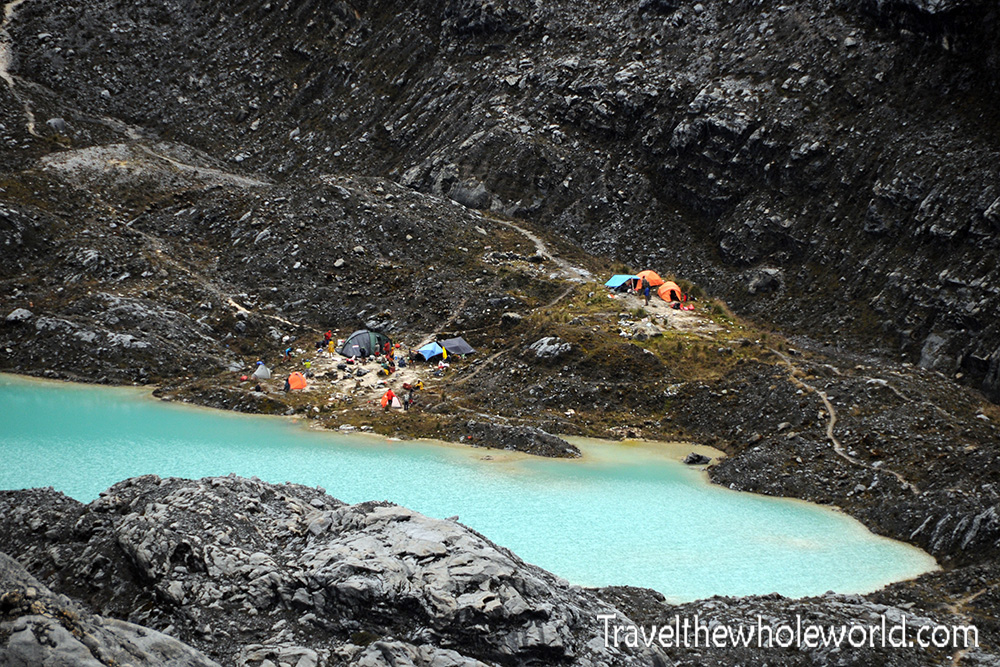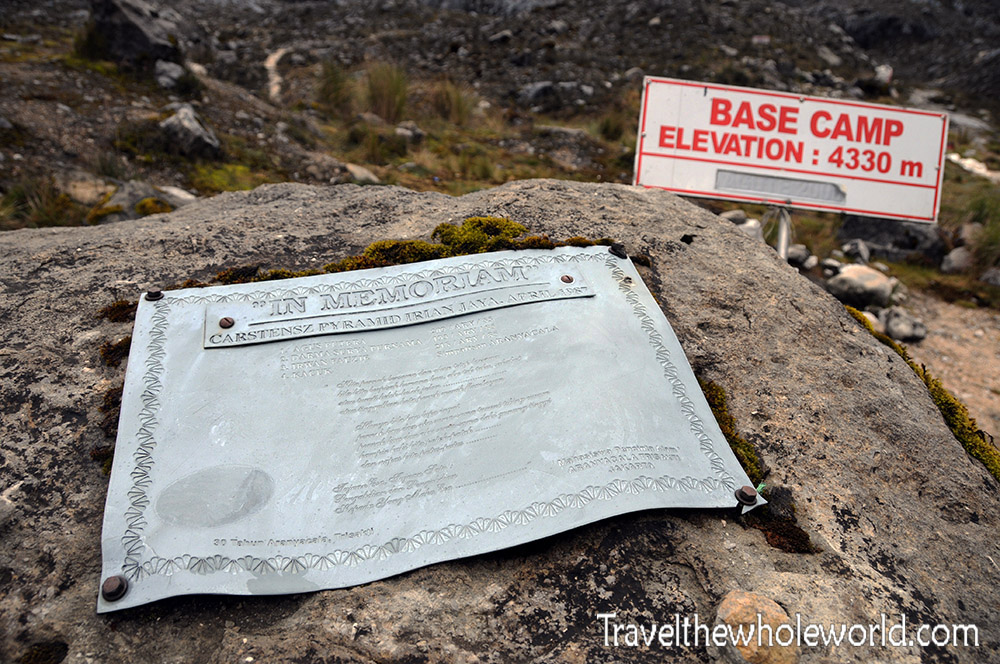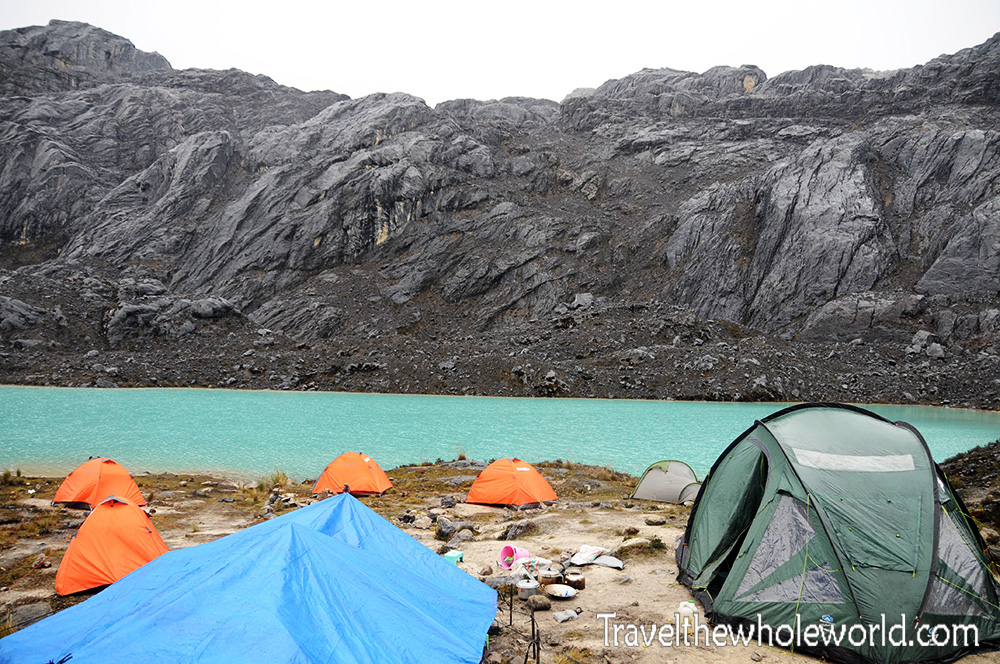Carstensz Pyramid’s Highlands
Day 4 of our expedition started by immediately going up a steep muddy hill that was followed by a relentless ridge. As we continued our hike towards Carstensz Pyramid it was clear we were out of the rain forest. We had entered a sort of cold and muddy high altitude jungle. The still had trees, but they weren’t as tall. The flora was still dense, but it seemed like we were in a completely different biome. The photo above was taken at the beginning of our day. I was depressed to find that we had left Camp II at 10,000 feet (3,000 meters), at one point passed 12,000 feet (3,600 meters), and then trekked downhill to Camp III which was at the same elevation of Camp II. The ups and downs of this trek, plus being cold and covered in mud really take a psychological toll. We basically gained a total of 3,000 feet (1,000 meters) in hiking only to lose all those gains with our last minute downhill decent. Our real progress on day four was only getting closer to Carstensz but not higher in altitude.
This part of the trek had gotten better as far as fallen logs and roots go. We no longer dealt with those hazards. The trail here was even muddier than the rain forest and had its own new challenges however. I’d rate this day as less challenging than the final day in the rainforest, but don’t mistake that for being easy. Above you can see some of the strange plants we came across in this region of West Papua. I only saw this type of plant once, but I called it the Octopus Plant.
Pictured above is Camp III, and in the photo below you can see my muddy pants after the hike. I hung them up in a failed and desperate attempt to clean and dry them. I had gone to a tiny stream and washed them for about twenty minutes trying to get inches of accumulated mud off, but it seemed to be impossible. I have no idea how, but I even had mud on the inside of my pants. Everything was covered including my socks and the blisters I got in the beginning of the hike. At this point I was feeling pretty miserable, but wasn’t the only one. The other climbers on this trip also expressed their extreme discomfort and amazement at how we actually paid to be here, and not a small amount! It was in Camp III where we again talked about how far base camp was. Our expectations were that it was only another day of hiking, but being that we couldn’t even see the mountain from here it that didn’t seem very logical. Finally we were told the terrible news that now we had two more full days before reaching base camp. Extreme sadness.
The bad news of having an extra day was hard, but at least Camp III had interesting views. Seeing the snows and scraggly mountains in the distance lifted our spirits since we were nearing Carstensz Pyramid’s homeland. My spirits were lifted the most by the hope of reaching drier ground without deep mud. The rock formations in the photo above was taken after making it to Camp III. Below is the same mountain but it was taken the following morning when the clouds had cleared. You can barely make out two glaciers in the higher peaks.
On day 5 we headed for Camp IV. This was our last stop before we’d make it to base camp. Once again, I had hoped that the terrain would ease up and there wouldn’t be anymore mud, but instead I found parts of this trek to have the deepest mud yet. Above you can see what the ground looks like. It’s a bit misleading as it looks like you’re just hiking over moss but this terrain can actually be pretty tricky. I’ve seen mossy ground like this and sometimes I stepped on it to find firm support. Other times my boot would go straight through, and I’d seriously drop almost two feet into mud! It was impossible to avoid and happened to everyone, so you would end up getting mud up to your waist again and cold dirty water in your boots.
On the entire trek since entering the rainforest, this was the only time we got a break and saw clear skies. It didn’t last long of course, but just seeing blue skies and the sun again felt amazing. This was a really beautiful part of the world for sure, and so unique. Almost no one visits these parts of the island. For those that make it, you are truly some of the very view people on earth to see these strange lands.
What I liked about this day was that the terrain was relatively flat. The rainforest’s trip wires and slippery logs had failed to injure any of us, but the meadows had its own methods of creating pain and misery. I had mentioned how you can step straight into deep mud without realizing it, but there were also hidden streams as well. This one above was a bit more obvious, but sometimes the grass is so tall you couldn’t see the ones that were a few inches wide. It is one of several possible places that you could accidentally step into if you’re not paying attention.
Our next camp was hidden somewhere in the top of this hill in the photo above. Towards the end of the day I ended up getting lost from the trail and climbed a small rocky ridge. I could see smoke from where the camp was located, but wasn’t sure exactly how to get there. I was with another climber, and we spent almost an hour fighting deep holes, scrambling up razor sharp rocks and thick vegetation until we finally made it to camp. It was a dangerous and tiring misadventure that robbed me of what might have been the easiest day on the expedition. Below you can see an example of some of the sharp rocks I had saw earlier in the day while still in the meadows. I didn’t bother taking any photos while trying to get out of the mess I had put myself into.
The easier day also came with a price. Since we had spent most of the morning descending into the meadows, by the time we reached Camp IV we were only at 12,000 feet (3,600 meters). From camp to camp we it always felt like we had gained a ton of elevation but we were always ending up the day hardly being higher than where we started. The photo above shows a tent in Camp IV with the next day’s challenge in the background.
I should also mention that of course everything we were doing the porters were doing as well. Some were carrying heavy loads while others had family members trekking nearby for the ride. Above are some of the porters who made it all the way to Camp IV. It was Halloween the night before and someone had brought a witch’s hat. The porters did not speak or understand English, so I was unable to explain Halloween to them. The guy who has the hat on wore it for the rest of the trip, and is probably wearing it to this day.
The next day’s hike began with a simple trek through a short patch of woods that led to this lake. It was a nice simple stroll and actually pretty enjoyable. After the lake was what I called “The Wall” which turned out to be the worst challenge yet. The zigzagging, extremely steep, and muddy climb took over an hour. Some parts had areas of exposure where a fall would leave you with broken bones.
I didn’t take any pictures while climbing the wall except this one and that is a big regret of mine. Taking my camera out was the last thing on my mind as we ascended it. We had some rain while climbing so it may have been muddier than it should have been, but then again when does it not rain out here. I’d even go as far as to say that I’d prefer the rain forest to this section.
After the wall, the trail descended down into a rocky area and went right up to another large lake. By now the rain was pouring down hard so I had put my camera in my backpack. I do regret not being able to photograph the lake, even in the rain. It was much larger than previous ones I had seen on this trip and even had a nice sandy beach. It was such an out of place sight to see after all the terrain we had crossed.
After the lake we had to ascend another very steep hill, but it was much easier than the wall. This was followed by a short scramble that gained about 40 feet (12 meters). This was another place you don’t want to fall. By now the terrain mostly consisted of sandy and mossy rock, and finally the mud was no more. Below is a photo taken near 14,000 feet (4,200 meters).
Eventually on our way to base camp, we passed 14,500 feet (4,400 meters), which is higher than any point in the continental United States. I was feeling very tired this day. Since my stomach was rumbling I knew it wasn’t from altitude but probably from lack of food. I was well aware I was doing a horrible job of feeding myself on this trip. I was worried that my body was eating itself out. I planned to force myself to eat everything I could once I arrived to base camp. Even without food, the view above was all I needed to feel energized again. Even though I couldn’t see much of it, I realized I was finally looking at the base of Carstensz Pyramid! Though the clouds hit the mountain, from here I knew that it rises dramatically and climbs nearly half a mile (one kilometer) into the sky.
Right around the corner from this view I could see base camp, or Camp V, which is located at 14,000 feet (4,330 meters). I climbed down a bit and made it to the camp by a turquoise lake. I was both incredibly nervous and excited that tomorrow was the day we had all been waiting for. I looked forward to getting some rest before the final push. The beautiful lake is a result of the mineral run off from mountains and gave a relaxing atmosphere despite the cold rainy weather. The temperatures here were above freezing, but not by much. Since everything was damp and we were still wet it felt like it was much colder than it actually was.
By camp was a sign marking base camp and also some kind of memorial dedicated to a group of Indonesians. I assume they either were the first Indonesians to visit here, or maybe they even lost their lives. I wasn’t able to find out the details of that story though.
Right around the corner from this view I could see base camp, or Camp V, which is located at 4,330 meters or just above 14,000 feet. I climbed down and made it to the camp by a turquoise lake and looked forward to getting some rest before the final push. The beautiful lake is a result of the mineral run off from mountains and gave a relaxing atmosphere despite the cold rainy weather. The temperatures here were above freezing, but because everything was damp it felt like it was much colder than it actually was. In the upper right photo, you can see some kind of memorial dedicated to a group of Indonesians who lost their lives here, but I’m not sure about the details of that story. Below is a photo taken of the beautiful lake taken from base camp.
